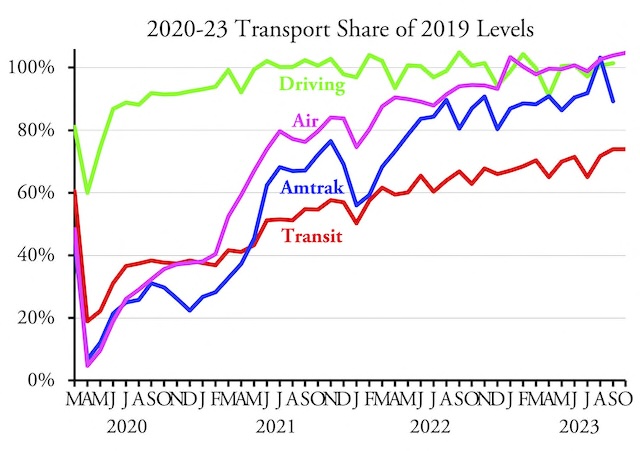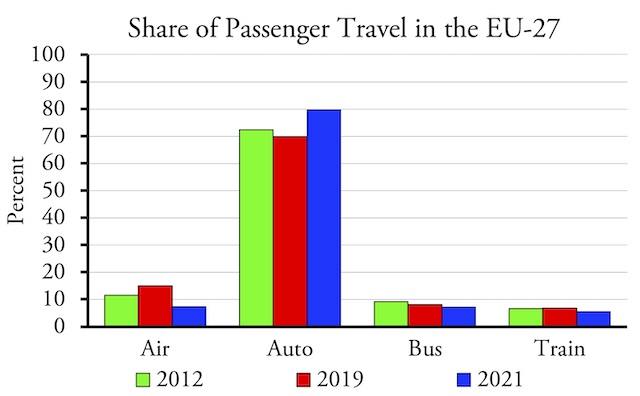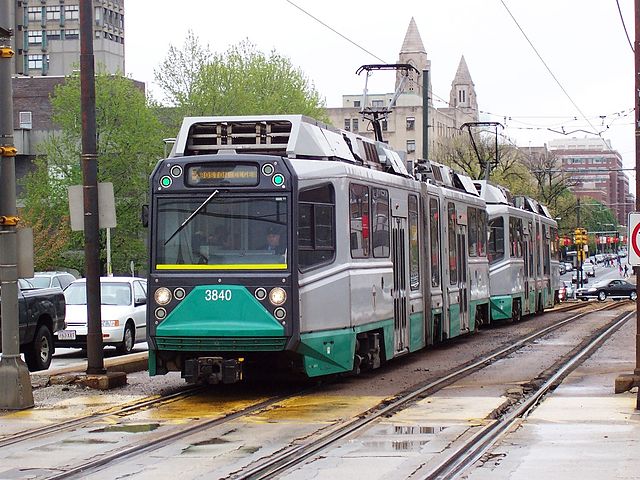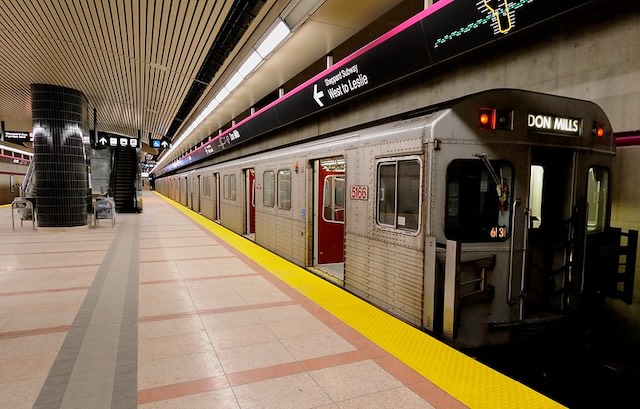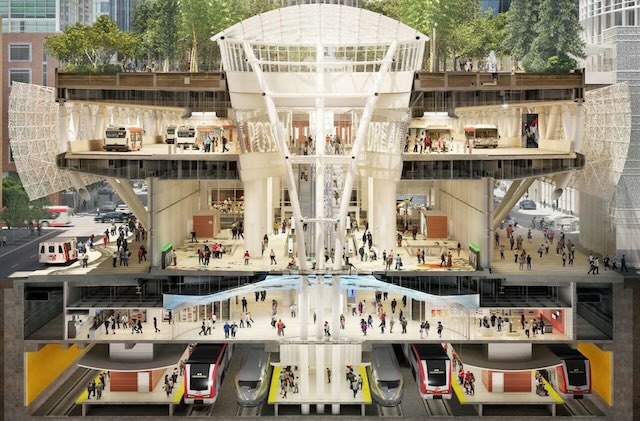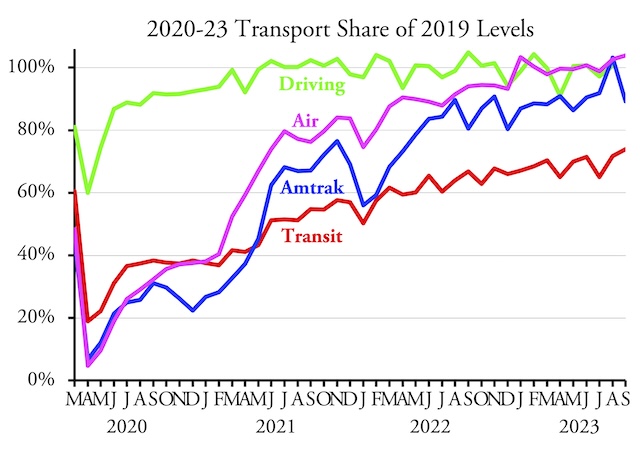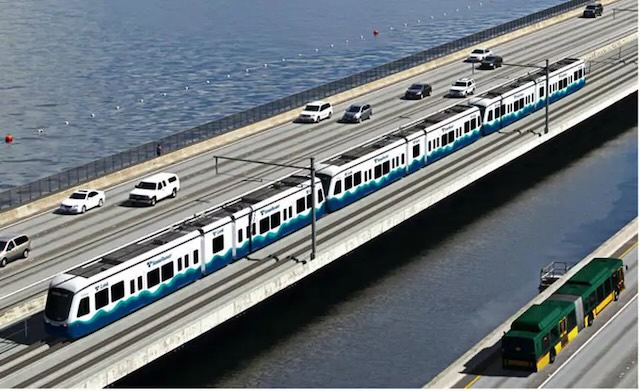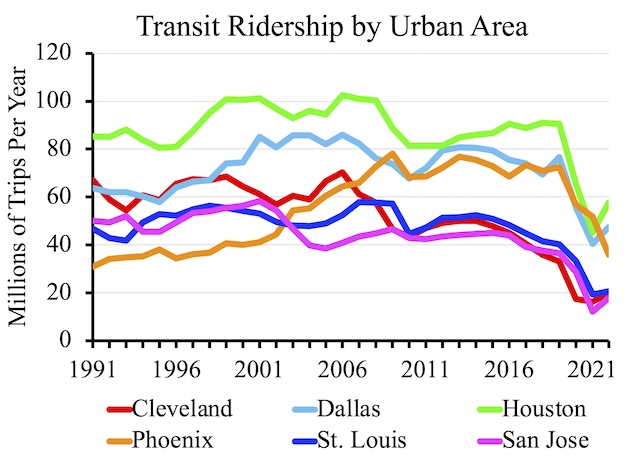Transit carried 73.90 percent as many riders in October 2023 as in the same month in 2019, according to data released by the Federal Transit Administration yesterday. This is just a couple of hairs less than the 73.92 percent carried in September. Rail ridership was 71.0 percent of 2019 while bus ridership was 76.6 percent. Actual October ridership was more than September’s, which is the case for most years.
As with last month, New York, Los Angeles, Miami, and Houston transit systems are much better than average, carrying 78 to 85 percent of 2019 levels. Washington seems to have caught up with the average, carrying 73.7 percent. Atlanta, Boston, Phoenix, and San Francisco are all doing worse than average, carrying less than 70 percent and, in Phoenix’s case, less than 56 percent of 2019 numbers. Continue reading

